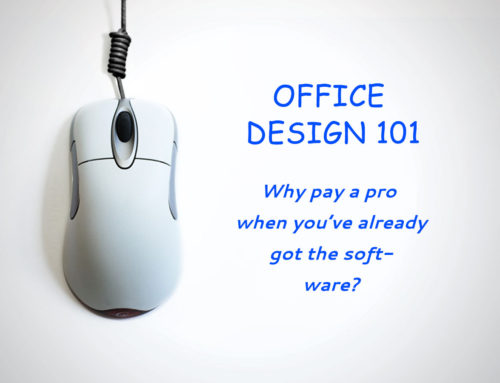OK, you started out with a clear mandate: you need to get a new website designed and built because your current site has a lot of problems. Pick your reasons, but I’m willing to bet they’re in the list that follows:
- It looks old or outdated
- The content is stale and difficult to update or change
- The messaging is weak
- The photos suck
- No one can figure out how to find anything
- The design and layout is inconsistent.
- The company brand isn’t adequately represented
- The site isn’t easy to read on phones.
You have the responsibility to not only improve it, but also make everybody else in your company happy. On that proud day when the new site goes public, it would be great if everyone else in your company all fell to their knees at your feet chanting your name, but let’s assume that all you can really expect is the obligatory “Thanks. Looks good.” emails and the chance to keep your desk for another day.
So how do you do that? I’m glad you asked (actually, I asked… but you were probably thinking it).
1. Know what it is that you are responsible for developing.
A website is your company’s primary communications and marketing tool. It is not a static brochure that you produce one time and pull out to show people when the opportunity arises. It is a dynamic and constant face for all that your company stands for. It is not your sales team, but it should be their best sales tool. It is likely the first place people go to when they want to hire you, work with you or invest in you.
Does that sound important enough for you? For your company? If you answered “no”, then you should probably just go back to playing doodlejump, GTA, or whatever it is you crazy unemployed kids do nowadays.
2. Define your target audience. Define what matters most to them.
Who do you have to impress in order to keep your business profitable? It’s probably not your CEO or the person who hired you. Yet, it is so tempting to simply ask those individuals what they want and do what they want. Big mistake. Ego and personal preferences should play no part in the strategic and creative effort put into any public communications piece, especially a corporate website. If you run your company, then know this: you are not the target audience.
If you already know your target audience, then good for you. Talk with them and find out what they think you could/should do to make your site more relevant and useful. Customers, investors, employees and the general public all have different motivations and expect to be treated differently. But you should still present a unified brand and message. It helps to prioritize.
Check your current site analytics to discover how people use your site. You may be in a business where it is beneficial to have a website that works best on phones because that’s how your key audience gets the info they need…. maybe not. But if you have solid evidence on how they access your site and what they’re looking for, then you can spend your time and money on tangible improvements to your site rather than fussing over stuff that won’t positively influence your ROI.
3. Dedicate a team to the project and develop a workback schedule.
Depending on the size of your organization, you may not have the luxury to hire a full-time crew whose sole purpose within the company is to push this site live. But you can still expect the people who agree to take this task on will set aside time on a regular basis to work on their assigned duties. Never end a meeting without clear “next steps and deadlines” assigned to the team members. There are several online project tracking tools that help people work together more efficiently. I like Jumpchart, Trello and Basecamp. And then there’s Monday.com. The list goes on and on… If you adopt one, then get everyone on the same platform and use it religiously. Keep all communication within the project tracking platform and avoid initiating/participating in email side conversations, because those can raise issues that spark little side projects which often change the overall scope, or bump other deliverable deadlines. If that happens, how can you expect the project management tool to keep track of the project?
4. Stay focused.
Funny how work can get in the way of getting things done. I have been invited to many mid-term project meetings on websites where the majority of time is spent simply getting everyone up-to-speed and refocused on the project after weeks of neglect. And then there’s the small talk where everyone needs to hear about everyone’s social lives since they last got together. I like hearing about people’s lives too, but I have found that if I stay in close communication with my team while working on a project, we spend less time catching up and more time getting ahead.
5. Well-written content makes everything better.
This bit of advice may seem odd coming from an Art Director, but it’s crucial. No matter how ugly your website is, the new website you launch is never just a designer’s challenge to solve. Great design is the outward visual representation of the message. A great message can actually inspire a designer to try something new. If the message is lacking, then the design is going to have to work harder to compensate or hide that fact, kinda like wrapping a cheap present inside some really shiny paper with ribbons and bows and sparkles all over it. But sooner or later the wrapping paper gets torn off and people will see what you’ve given them. Did you take the time to craft a message they would deem valuable and worthy?
Work on the sitemap and content of your site as hard as the designers work on the visuals. Work on it before or at the same time as the design is being developed. Create a content map, page-by-page and start filling in the holes. Include all reference links and image links as they are finalized. Have the written content reviewed and approved before the site design is handed over to the developers. Get images approved in a timely manner, preferably before the webpages are getting built. By having all the content and visual assets approved beforehand, you will avoid hours (possibly days) of last-minute revisions before you are ready to press the button to go live.
BTW: There is no “button” to push.
In case you didn’t know already, pushing a website to go live is not quite as easy as pressing a button. You should prepare with your Host Provider well in advance of the go-live date. Pick a date and time of day when folks are around and ready to deal with the transfer. For example, It’s not usually a good idea to try and go live on a Friday evening, unless you really want to pay overtime to the IT guys who suddenly encountered a bag of issues with the way their “admin page returned a “404-page-not-found error” when they change the virtual directory to redirect to the URL structure page ID format, blah blah techy-tech blah blah blah”.
I guess my point is, prepare for the worst and you probably won’t have to deal with it.
If you go back to the top of this article, you will see my shortlist of common reasons to redesign a website. It’s important to acknowledge that only three of those eight reasons are directly fixable by a designer. I’m not saying design isn’t important. It is. But a great design can’t fix everything. Aside from working on a new website design, you should also focus on four things you can take control of immediately to improve your project workflow and your bottom line: Strategy; Focus; Content; Planning.
As an Art Director and Designer, I am responsible for developing visual solutions that are smart, simple and surprising. In addition to strategic design, I enjoy illustration, animation and soundtrack design. My visual portfolio covers the communications spectrum from investor relations to consumer marketing (B2B and B2C). My design solutions range from websites to tradeshows, and have earned international recognition for many of my clients including The University of Calgary, Enerflex, Freehold Royalties and Gran Tierra Energy. With more than 22 years of communication and design experience, I have been a creative force behind the corporate brands of WestJet, Total E&P, SAIT, Crescent Point Energy, Newalta and many more.






Leave A Comment